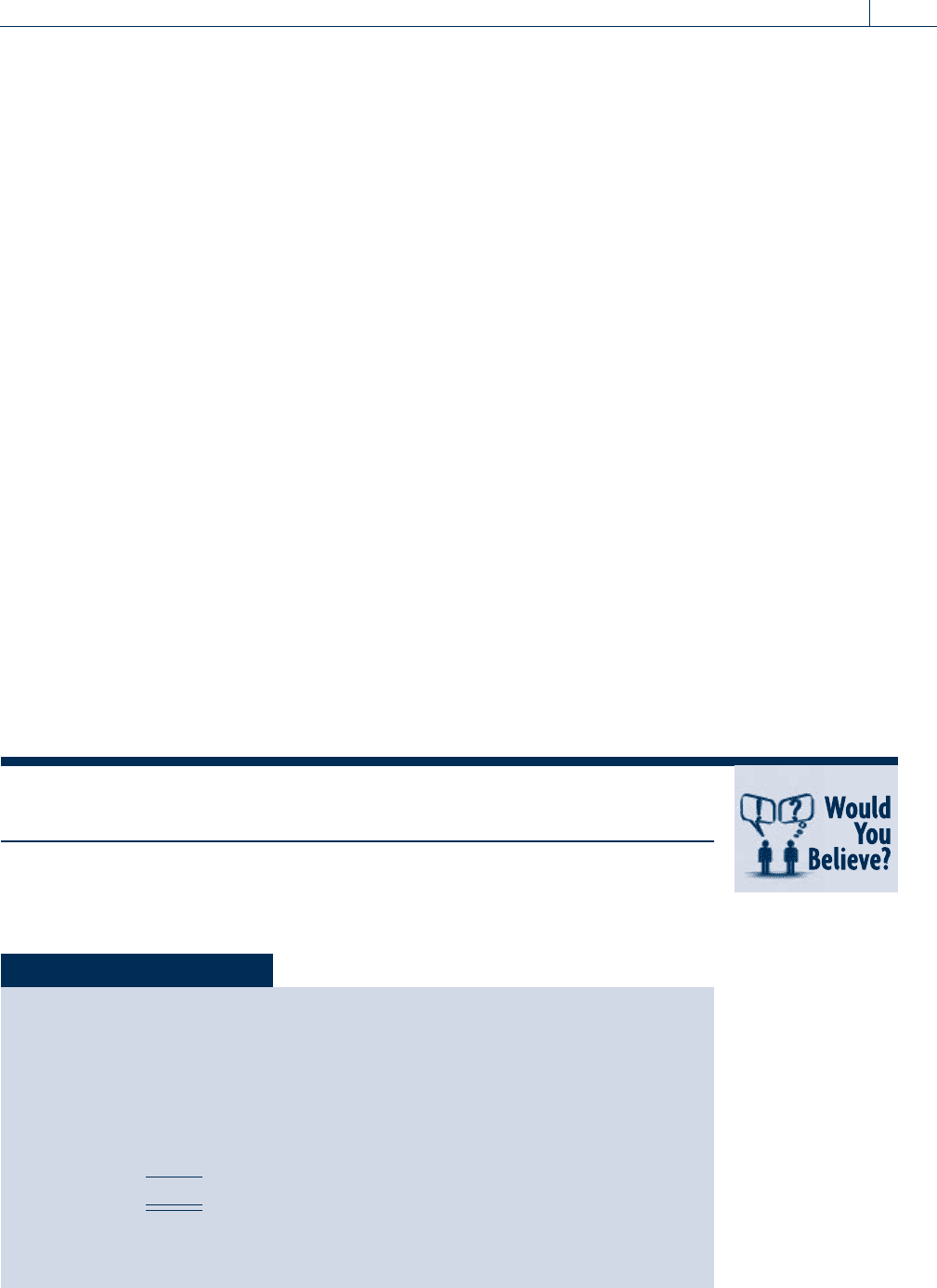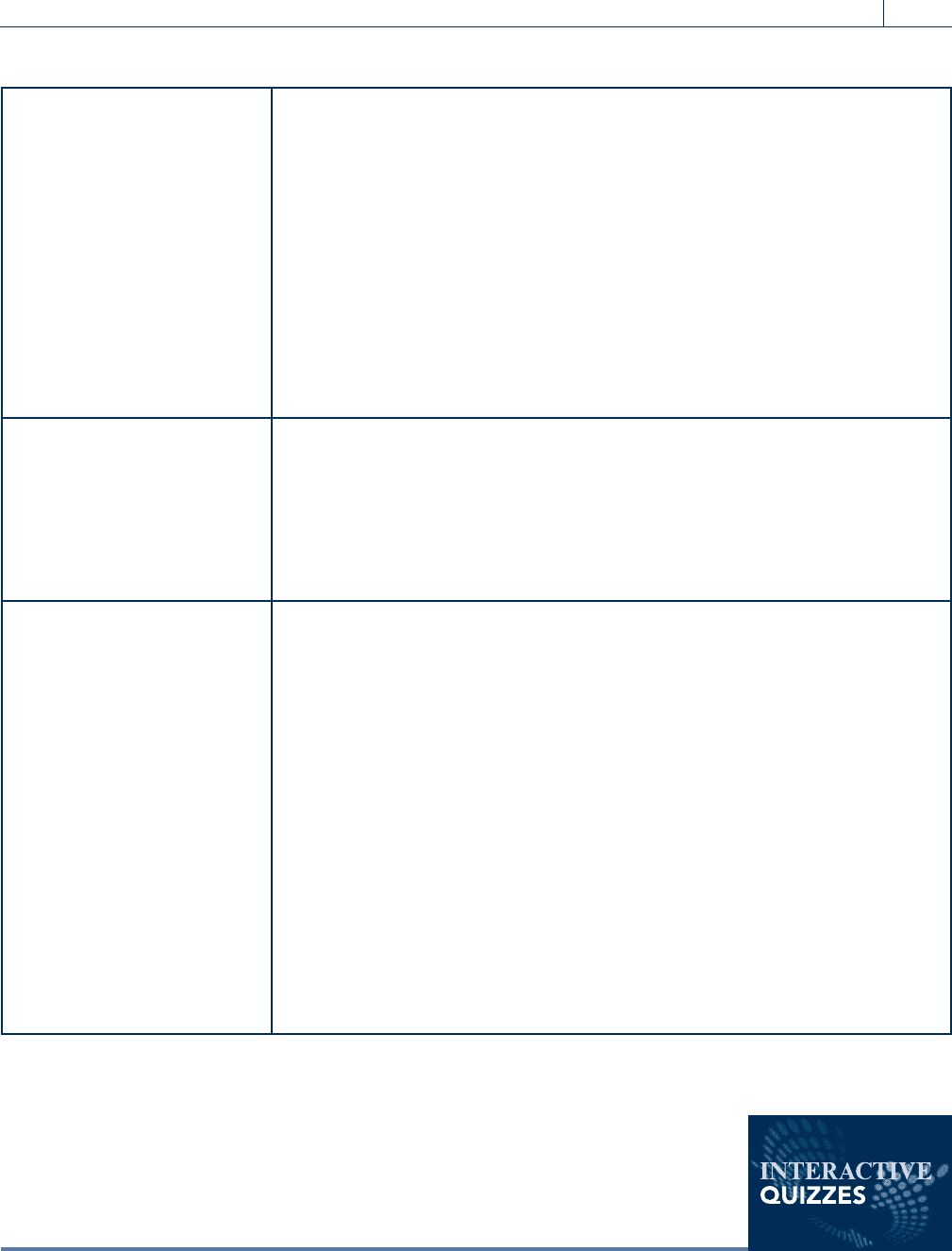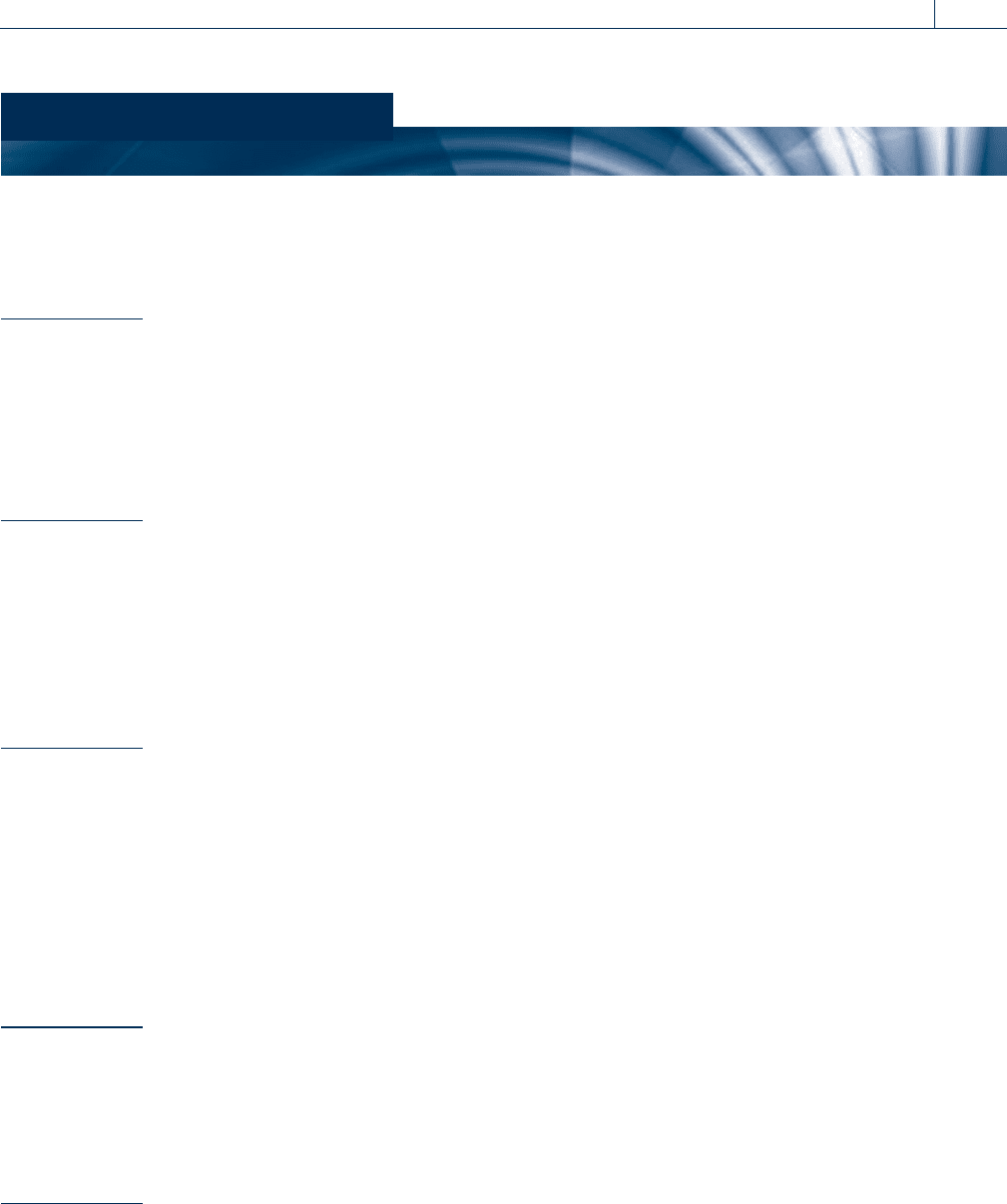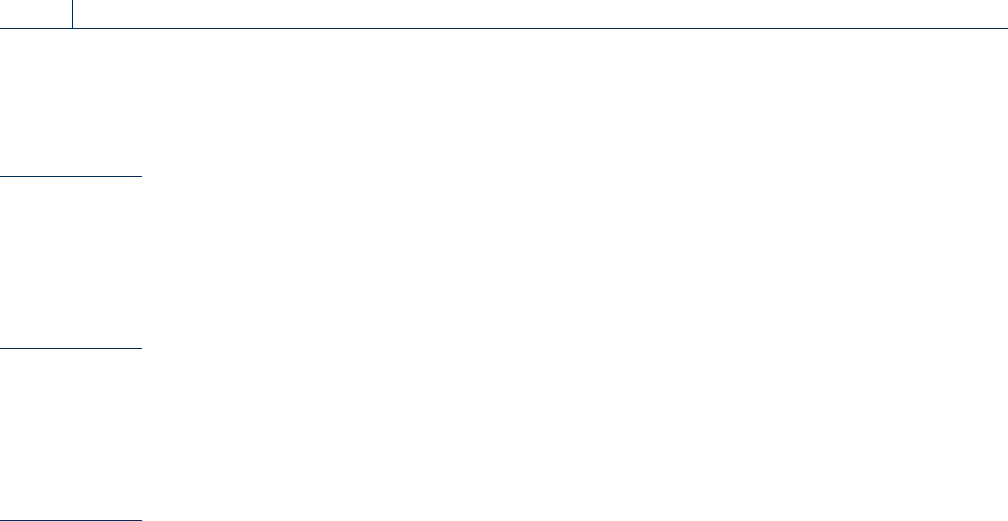Whittenburg Gerald E., Altus-Buller Martha. Income Tax Fundamentals
Подождите немного. Документ загружается.


Section 9.8
The Nanny Tax 9-27
Copyright 2010 Cengage Learning. All Rights Reserved. May not be copied, scanned, or duplicated, in whole or in part. Due to electronic rights, some third party content may be suppressed from the eBook and/or eChapter(s).
Editorial review has deemed that any suppressed content does not materially affect the overall learning experience. Cengage Learning reserves the right to remove additional content at any time if subsequent rights restrictions require it.

9-28 Chapter 9
Withholding, Estimated Payments, and Payroll Taxes
Copyright 2010 Cengage Learning. All Rights Reserved. May not be copied, scanned, or duplicated, in whole or in part. Due to electronic rights, some third party content may be suppressed from the eBook and/or eChapter(s).
Editorial review has deemed that any suppressed content does not materially affect the overall learning experience. Cengage Learning reserves the right to remove additional content at any time if subsequent rights restrictions require it.

The following workers are not subject to FICA and Medicare taxes on wages paid for
work in the home:
The taxpayer’s spouse
The taxpayer’s father or mother
The taxpayer’s children under 21 years of age
Anyone who is under age 18 during the year, unless providing household services is
his or her principal occupation. Being a student is considered an occupation for
purposes of this requirement.
EXAMPLE Allison is a 17-year-ol d high school student. During the year she earns
$1,700 babysitting for a neighbor with four children. Any amounts
she earns are exempt from FICA and Medicare requirements. How-
ever, if Allison is not a student and works full-time as a nanny, any
amounts she earns will be subject to the general FICA and Medicare
withholding requirements. N
Under the nanny tax provisions, household employers only have to report FICA and
Medicare, federal income tax withholding, and FUTA tax once a year. The taxpayer com-
pletes Schedule H and files it with his or her individual Form 1040. Taxpayers who have
nonhousehold worker(s) in addition to household worker(s) can elect to report any FICA
taxes and withholding on Forms 941 and 940 with their regular employees. Also, at the
close of a tax year, taxpayers must file Form W-2 (Copy A) and Form W-3 with the Social
Security Administration for each household employee who earned more than $1,700 in
cash wages subject to FICA and Medicare tax. For complete details on reporting the
wages of household employees, see IRS Publication 926.
While no one knows how many people should be filing Schedule H, some esti-
mates indicate that fewer than one in thirteen are complying with the law.
Self-Study Problem 9.8
Susan Green hires Helen in February 2010 to clean her house for $50 per
week. Susan does not withhold income taxes from Helen’s wages. Helen’s
quarterly wages are as follows:
1st quarte r $ 300 ($50 6 weeks)
2nd quarter $ 650 ($50 13 weeks)
3rd quarter $ 650 ($50 13 weeks)
4th quarter
$ 650 ($50 13 weeks)
Total
$2,250
Complete Susan’s 2010 Schedule H (Form 1040) on pages 9-33 and 9-34,
using the above information.
Section 9.8
The Nanny Tax 9-29
Copyright 2010 Cengage Learning. All Rights Reserved. May not be copied, scanned, or duplicated, in whole or in part. Due to electronic rights, some third party content may be suppressed from the eBook and/or eChapter(s).
Editorial review has deemed that any suppressed content does not materially affect the overall learning experience. Cengage Learning reserves the right to remove additional content at any time if subsequent rights restrictions require it.

KEY POINTS
Learning Objectives Key Points
LO 9.1:
Compute the income tax withhold-
ing from employee wages.
Employers are required to withhold taxes from amounts paid to employees for wages,
including salaries, fees, bonuses, commissions, and vacation pay.
Form W-4, showing the filing status and the number of withholding allowances an
employee is claiming, must be furnished to the employer by the employee.
When using the percentage withholding method, an employer 1) multiplies the number of allow-
ances by a specified allowance amount, 2) subtracts that amount from the employee’s gross
wages, and 3) multiplies the result by the percentage obtained from the withholding tables.
Under the wage bracket method, the amount of withholding is obtained from the tables
based on the total wages and the number of withholding allowances claimed for the appro-
priate payroll period and marital status.
Financial institutions and corporations must withhold on the taxable part of pension, profit-
sharing, stock bonus, and individual retirement account payments.
Employers must report tip income to employees using one of several methods. An employer
is not required to withhold income, Social Security, or Medicare tax on allocated tips.
If backup withholding applies, the payor (i.e., bank or insurance company) must withhold
28 percent of the amount due to the taxpayer.
LO 9.2:
Determine taxpayers’ quarterly
estimated payments.
Self-employed taxpayers are not subject to withholding; however, they must make quarterly
estimated tax payments.
Payments are made in four installments on April 15, June 15, and September 15 of the tax
year, and January 15 of the following year.
Any individual taxpayer who has estimated tax for the year of $1,000 or more, after sub-
tracting withholding, and whose withholding does not equal or exceed the ‘‘required annual
payment,’’ must make quarterly estimated payments.
The required annual payment is the smallest of three amounts: 1) 90 percent of the tax
shown on the current year’s return, 2) 100 percent (or 110 percent at certain income levels)
of the tax shown on the preceding year’s return, or 3) 90 percent of the current-year tax
determined each quarter on an annualized basis.
LO 9.3:
Understand the FICA tax, the
federal deposit system, and
employer payroll reporting.
For 2010, the Social Security (OASDI) tax rate is 6.2 percent and the Medicare tax rate is
1.45 percent each for employees and employers. The maximum wage subject to the Social
Security portion of the FICA tax is $106,800, and all wages are subject to the Medicare
portion of the FICA tax.
Taxpayers working for more than one employer during the same tax year may pay more than
the maximum amount of FICA taxes. If this happens, the taxpayer should compute the excess
taxes paid and report the excess on Form 1040 as a payment against his or her tax liability.
Employers must make periodic deposits of the taxes that are withheld from employees’
wages.
Employers are either monthly depositors or semiweekly depositors, depending on the total
income taxes withheld from wages and FICA taxes attributable to wages. However, if with-
holding and FICA taxes of $100,000 or more are accumulated at any time during the year,
the depositor is subject to a special 1-day deposit rule.
On or before January 31 of the year following the calendar year of payment, an employer
must furnish to each employee two copies of the employee’s Wage and Tax Statement,
Form W-2, for the previous calendar year.
The original copy (Copy A) of all W-2 forms and Form W-3 (Transmittal of Income and Tax
Statements) must be filed with the Social Security Administration by February 28 of the
year following the calendar year of payment.
Form 1099s must be mailed to the recipients by January 31 of the year following the calen-
dar year of payment.
9-30 Chapter 9
Withholding, Estimated Payments, and Payroll Taxes
Copyright 2010 Cengage Learning. All Rights Reserved. May not be copied, scanned, or duplicated, in whole or in part. Due to electronic rights, some third party content may be suppressed from the eBook and/or eChapter(s).
Editorial review has deemed that any suppressed content does not materially affect the overall learning experience. Cengage Learning reserves the right to remove additional content at any time if subsequent rights restrictions require it.

Reinforce the tax information covered in this chapter by completing the online
interactive tutorials located at the Income Tax Fundamentals Web site:
www.cengagebrain.com.
LO 9.4:
Calculate the self-employment tax
(both Social Security and Medicare
portions) for self-employed
taxpayers.
Self-employed individuals pay self-employment taxes instead of FICA taxes, and since
these individuals have no employers, the entire tax is paid by the self-employed
individuals.
For 2010, the Social Security (OASDI) tax rate is 12.4 percent and the Medicare tax rate is
2.9 percent with a maximum base amount of earnings subject to the Social Security portion
of $106,800 (all earnings are subject to the Medicare portion).
If an individual, subject to self-employment taxes, also receives wages subject to FICA taxes
during a tax year, the individual’s maximum base amount for self-employment taxes is
reduced by the amount of the wages.
Net earnings from self-employment include net income from a trade or business, the distrib-
utive share of partnership income from a trade or business, and net income earned as an
independent contractor.
Self-employed taxpayers are allowed a deduction for AGI of one-half of the self-
employment tax.
LO 9.5:
Compute the amount of FUTA tax
for an employer.
The FUTA (Federal Unemployment Tax Act) tax is not withheld from employees’ wages, but
instead is paid in full by employers.
The federal tax rate is 6.2 percent of an employee’s wages up to $7,000, but a credit of
5.4 percent is allowed if state unemployment taxes are paid, for an effective federal tax
rate of only .8 percent.
Employers make the largest portion of unemployment tax payments to state governments
that administer the federal-state program.
LO 9.6:
Apply the special tax and reporting
requirements for household
employees (the nanny tax).
The ‘‘nanny tax’’ provisions provide a simplified reporting process for employers of domestic
household workers.
Household employers are not required to pay FICA taxes on cash payments of less than
$1,700 paid to any household employee in a calendar year.
If the cash payment to any household employee is $1,700 or more in a calendar year, all
the cash payments (including the first $1,700) are subject to Social Security and Medicare
taxes.
A taxpayer is a household employer if he or she hires workers to perform household
services, in or around the taxpayer’s home, that are subject to the ‘‘will and control’’ of
the taxpayer (e.g., babysitters, caretakers, cooks, drivers, gardeners, housekeepers,
maids).
Certain workers are not subject to Social Security and Medicare taxes on wages paid
for work in the home. These workers include the taxpayer’s spouse, the taxpayer’s father
or mother, the taxpayer’s children under 21 years of age, and anyone who is under age
18 during the year, unless providing household services is his or her principal
occupation.
Under the nanny tax provisions, a household employer only has to report Social Security and
Medicare, federal income tax withholding, and FUTA tax once a year by filing Schedule H
with his or her individual Form 1040.
Section 9.8
The Nanny Tax 9-31
Copyright 2010 Cengage Learning. All Rights Reserved. May not be copied, scanned, or duplicated, in whole or in part. Due to electronic rights, some third party content may be suppressed from the eBook and/or eChapter(s).
Editorial review has deemed that any suppressed content does not materially affect the overall learning experience. Cengage Learning reserves the right to remove additional content at any time if subsequent rights restrictions require it.

9-32 Chapter 9
Withholding, Estimated Payments, and Payroll Taxes
Copyright 2010 Cengage Learning. All Rights Reserved. May not be copied, scanned, or duplicated, in whole or in part. Due to electronic rights, some third party content may be suppressed from the eBook and/or eChapter(s).
Editorial review has deemed that any suppressed content does not materially affect the overall learning experience. Cengage Learning reserves the right to remove additional content at any time if subsequent rights restrictions require it.

Section 9.8
The Nanny Tax 9-33
Copyright 2010 Cengage Learning. All Rights Reserved. May not be copied, scanned, or duplicated, in whole or in part. Due to electronic rights, some third party content may be suppressed from the eBook and/or eChapter(s).
Editorial review has deemed that any suppressed content does not materially affect the overall learning experience. Cengage Learning reserves the right to remove additional content at any time if subsequent rights restrictions require it.

9-34 Chapter 9
Withholding, Estimated Payments, and Payroll Taxes
Copyright 2010 Cengage Learning. All Rights Reserved. May not be copied, scanned, or duplicated, in whole or in part. Due to electronic rights, some third party content may be suppressed from the eBook and/or eChapter(s).
Editorial review has deemed that any suppressed content does not materially affect the overall learning experience. Cengage Learning reserves the right to remove additional content at any time if subsequent rights restrictions require it.

QUESTIONS and PROBLEMS
GROUP 1:
MULTIPLE CHOICE QUESTIONS
.............................................. .............................................. .
LO 9.1
1. Which of the following amounts paid by an employer to an employee is not subject to
withholding?
a. Salary
b. Bonus
c. Commissions
d. Reimbursement of expenses under an accountable plan
e. All of the above are subject to withholding
LO 9.1
2. Abbe, age 56, is married and has three dependent children over age 17. Abbe has one
job, and her husband, age 58, is not employed. How many allowances should Abbe
claim on her Form W-4 for 2010?
a. 3
b. 4
c. 5
d. 6
e. 7
LO 9.1
3. Michele is single with no dependents and earns $23,000 this year. Michele claims six-
teen allowances on he r Form W-4 for 2010. Which of the foll owing is correct con-
cerning her Form W-4?
a. Michele may not under any circumstances claim sixteen allowances.
b. Michele’s employer will require her to verify her right to claim sixteen allowances.
c. Michele’s employer will disregard her Form W-4 and withhold as single with no
allowances.
d. Michele’s employer will submit a copy of her W-4 to the IRS if directed to do so by
written notice.
e. None of the above is correct.
LO 9.1
4. Which of the following forms would a lottery winner receive for her winnings?
a. Form W-4
b. Form W-2G
c. Form 1099-DIV
d. Form 1099-R
e. Form 1099-MISC
LO 9.4
5. For 2010, Roberta is a self-employed truck driver with earnings of $43,000 from her
business. During the year, Roberta received $2,500 in interest income and dividends
of $500. She also sold investment proper ty and recognized a $1,500 gain. What is
the amount of Roberta’s self-employment tax (Social Security and Medicare taxes)
liability for 2010?
a. $3,038
b. $3,290
c. $6,076
Questions and Problems 9-35
Copyright 2010 Cengage Learning. All Rights Reserved. May not be copied, scanned, or duplicated, in whole or in part. Due to electronic rights, some third party content may be suppressed from the eBook and/or eChapter(s).
Editorial review has deemed that any suppressed content does not materially affect the overall learning experience. Cengage Learning reserves the right to remove additional content at any time if subsequent rights restrictions require it.

d. $6,579
e. None of the above
LO 9.4
6. Which of the following is not subject to self-employment tax?
a. Net earni ngs of the owner of a shoe store
b. Net earnings of a self-employed lawyer
c. Distributive share of earnings of a partnership
d. Gain on the sale of real estate held for investment
e. Net earni ngs of the owner of a dry cleaner
LO 9.6
7. Bob employs a maid to clean his house. He pays her $1,800 during the current year.
What is the proper tax treatment of the FICA and Medicare tax for the maid?
a. None of the $1,800 is subject to FICA or Medicare tax.
b. The $1,800 is subject to the Medicare tax, but not the FICA tax.
c. $500 is subject to the FICA and Medicare tax.
d. The entire $1,800 is subject to the FICA and Medicare tax.
LO 9.6
8. Which of the following employees would not be exempt from the FICA and Medicare
taxes on wages paid for household work?
a. The taxpayer’s 20-year-old sister
b. The taxpayer’s wife
c. The taxpayer’s 16-year-old daughte r
d. The 14-year-old babysitter from down the str eet
GROUP 2:
PROBLEMS
.............................................. .............................................. .
LO 9.1 1. Phan Mai is a single taxpayer with two dependent children under age 17. Phan estimates
her wages for the year will be $36,000 and her itemized deductions will be $11,000.
Assuming Phan files as head of household, use Form W-4 on pages 9-37 and 9-38 to
determine the number of withholding allowances Phan should claim.
LO 9.1 2. Ralph and Kathy Gump are married with one 20-year-old dependent child. Ralph
earns a total of $39,000 and estimates their itemized deductions to be $16,000 for
the year. Kathy is not employed. Use Form W-4 on pages 9-39 and 9-40 to determine
the number of withholding allowances that Ralph should claim.
LO 9.1 3. Sophie is a single taxpayer. F or the first payroll period in October 2010, she i s paid
wages of $3,250 monthly. Sophie claims three allowances on her Form W-4.
a. Use the percentage method to calculate the amount of Sophie’s withholding for a
monthly pay period.
$ ____________
b. Use the withholding tables to determine the amount of Sophie’s withholding for
the same period.
$ ____________
LO 9.1 4. Big Bull restaurant employs twenty-three employees who receive tips. During the cur-
rent year, Big Bull has $410,000 in gross revenues, and its employees do not report any
tip income.
a. Complete as much as possible of Form 8027 on page 9-41 to determine the amount
of tip income that must be allocated to the empl oyees by Big Bull restaurant.
9-36 Chapter 9
Withholding, Estimated Payments, and Payroll Taxes
Copyright 2010 Cengage Learning. All Rights Reserved. May not be copied, scanned, or duplicated, in whole or in part. Due to electronic rights, some third party content may be suppressed from the eBook and/or eChapter(s).
Editorial review has deemed that any suppressed content does not materially affect the overall learning experience. Cengage Learning reserves the right to remove additional content at any time if subsequent rights restrictions require it.
